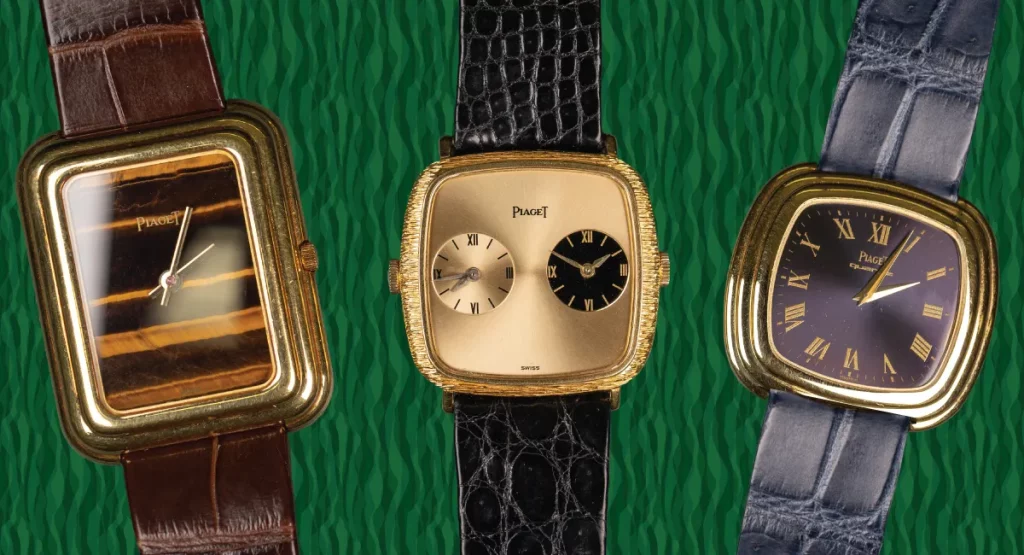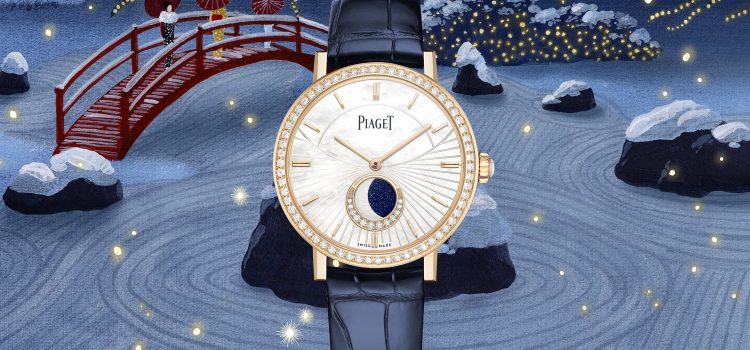Introduction
Piaget is a name synonymous with luxury, artistry, and precision, whose legacy spans more than 140 years in the watchmaking and jewelry industries. Piaget’s influence reaches beyond the boundaries of high-end horology and into global pop culture, with its unique blend of exquisite craftsmanship, innovation, and sophisticated design. This article explores the cultural impact of Piaget, examining its roots in Swiss craftsmanship, its modern-day influence, and its ability to shape the luxury watch industry and beyond.
1. The Origins of Piaget: A Deep Dive into the Brand’s History
1.1 Early Beginnings
Founded in 1874 by Georges Edouard Piaget in La Côte-aux-Fées, Switzerland, Piaget started as a small workshop dedicated to making high-quality movements for other Swiss watchmakers. Over time, it gained recognition for its technical prowess and exceptional craftsmanship.
1.2 Transition to Luxury
In the 1940s, Piaget’s transition from producing movements to creating complete watches and later incorporating fine jewelry marked the brand’s shift into the luxury market. The 1950s and 1960s saw Piaget focusing on ultra-thin movements, a milestone that would define the brand.
1.3 The Growth and Merging of Heritage
Piaget’s recognition as a powerhouse of the watch and jewelry industries was solidified after it became part of the Richemont Group in 1988, leading to global expansion. The heritage of Piaget intertwined with its modern identity, and the brand continued to innovate with its movements and iconic designs.
2. Piaget’s Cultural Impact: How the Brand Shapes Fashion and Lifestyle
2.1 The Role of Piaget in Popular Culture
Piaget’s luxury watches and jewelry have found their place in Hollywood, with stars such as Audrey Hepburn, Elizabeth Taylor, and Cameron Diaz endorsing the brand. Piaget’s affinity for the silver screen and the glamorous lifestyle led it to become a cultural symbol of sophistication and wealth.
2.2 Piaget and Art: Collaborations with Designers and Artists
Piaget’s ability to blend art and horology set it apart. Through collaborations with renowned artists, including the famous Piaget “Altiplano” collection, Piaget has influenced the way watches are not just timekeepers but also artistic expressions. The collaboration with artists like Salvador Dalí and Jean-Michel Basquiat, among others, redefined what a luxury timepiece can symbolize in terms of creativity and culture.
2.3 Piaget’s Presence in Modern Luxury Culture
Today, Piaget’s involvement in high society, charity events, and sponsorships with the arts further solidifies its status. The Piaget Polo collection, for example, is a testament to the brand’s ability to adapt to the fast-paced world of luxury sports and lifestyle.

3. Piaget’s Innovation and Craftsmanship: Shaping the Future of Haute Horlogerie
3.1 The Art of Movement Making: Piaget’s Technical Achievements
The history of Piaget is inextricably linked to its technical excellence. Piaget introduced the world’s thinnest mechanical watch movement, the caliber 9P, in 1957, followed by the 12P movement in 1960. These innovations solidified Piaget’s standing as a leader in the art of ultra-thin movement design.
3.2 Piaget’s Craftsmanship in Jewelry
Piaget’s iconic jewelry collections reflect an unwavering commitment to craftsmanship. The combination of precious metals, gemstones, and intricate designs showcases Piaget’s expertise not only in watchmaking but also in creating fine jewelry. Piaget’s mastery of both worlds allows the brand to offer timepieces and jewelry that complement one another, becoming symbols of prestige and beauty.
3.3 Technological Advancements: Embracing the Future
Piaget continues to innovate, blending traditional craftsmanship with cutting-edge technology. The brand’s use of materials like gold, titanium, and ceramics not only enhances the durability of its timepieces but also opens new doors for design flexibility. Piaget is also at the forefront of integrating smart technology into traditional watchmaking, keeping the brand relevant for future generations of horology enthusiasts.
4. Piaget’s Influence on the Luxury Watch Industry
4.1 Piaget’s Role in Redefining Luxury
While other luxury brands focused on traditional designs, Piaget redefined what it meant to be a luxury watchmaker by incorporating ultra-thin designs, exceptional craftsmanship, and artistic expression. Its creations influenced trends in the 1970s and 1980s, pushing boundaries in terms of what was possible in watchmaking.
4.2 Piaget’s Contribution to the Quartz Crisis
The quartz crisis of the 1970s led to the dominance of Japanese quartz watches, but Piaget’s response was innovative. Piaget stuck to its tradition of Swiss mechanical movements, using its technical ingenuity to produce watches that rivaled their quartz counterparts in terms of quality and precision.
4.3 Piaget’s Enduring Legacy: Competition and Collaboration
Despite fierce competition in the luxury watch sector, Piaget has maintained its position as a leading brand, with an emphasis on staying true to its heritage while innovating. Piaget’s collaborations with other prestigious Swiss watchmakers, as well as its ability to adapt to changing trends, shows its enduring influence on the luxury watch industry.
5. Piaget and Its Global Appeal: Cultural and Societal Influence
5.1 The Piaget Clientele: A Worldwide Audience
Piaget’s appeal transcends borders, attracting a global clientele with an appreciation for luxury and craftsmanship. The brand’s ability to maintain its high standards of artistry, alongside its commercial success, has allowed it to create an exclusive community of admirers across continents.
5.2 Piaget’s Contribution to Swiss Watchmaking Heritage
Piaget’s significance in the context of Swiss watchmaking history cannot be overstated. As part of Switzerland’s tradition of horological excellence, Piaget’s innovations in timekeeping and design continue to influence how Swiss watches are perceived globally.
5.3 Piaget and Sustainable Luxury
Piaget’s commitment to ethical practices, sustainability, and responsibility sets it apart in the luxury watch industry. By focusing on sustainable sourcing of materials and responsible manufacturing processes, Piaget aligns with the growing demand for transparency and environmental consciousness in luxury products.
Conclusion: Piaget’s Enduring Influence and Vision for the Future
Piaget’s ability to blend innovation, tradition, and artistry has cemented its place as one of the most influential luxury watchmakers in history. The brand’s influence on popular culture, its commitment to craftsmanship, and its continuing innovation ensures that Piaget will remain a pivotal force in the world of haute horlogerie for generations to come.





































